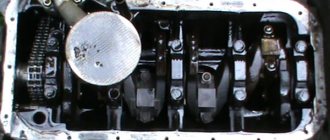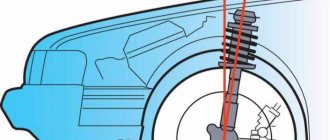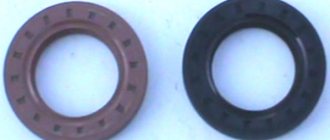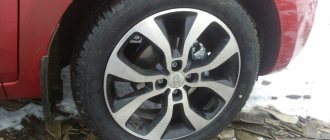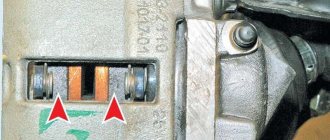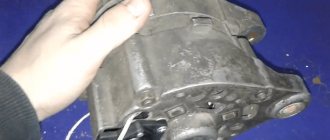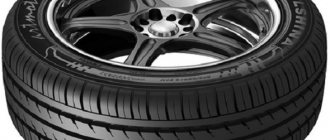What car are you the owner of? — Front-wheel drive, rear-wheel drive or all-wheel drive. Do you understand the mechanisms of a car, do you understand how its power and maneuverability on the road are justified, especially during descents and ascents? Often, the operation of cars takes place on a whim, only a part of the owners with their vehicle are on a first-name basis. An experienced and attentive driver clearly understands which part needs to be replaced as planned, whether it is necessary to rearrange the wheels, and what diagram is suitable for this. Not everyone, for example, can afford to allocate up to 20-30,000 rubles from the family budget twice a year to purchase a set of winter and summer tires. In order to save money, car owners are looking for acceptable solutions to the situation. And there may be several of them.
- “Once - yes much.” Some motorists think so and decide that it is better to buy expensive tires from a well-known brand, then you can count on quality, service, prestige and wear resistance of the product. Definitely the right decision. Firstly, premium tires are manufactured using innovative technologies, all high-level indicators are thought through, a quality stamp is given, and service life is extended. Secondly, expensive tires are a big responsibility. Of course, you can hope for their quality, and whether you can predict the road situation, whether you are able to find the ideal roadway without potholes or foreign sharp objects. There are no 100% safe roads, and any tire, be it economy class or premium, still does not last forever and is not insured against force majeure.
- “The sum does not change by changing the places of the terms.” A familiar rule from childhood. Among car owners, it is also used, only it is designated with a technical slant and sounds like this: rearranging the wheels on a car, the standard scheme is used.
- “A shirt worn to holes – still warm.” It’s practically a rag, but it’s a shame to throw it away. It may be a pity to part with your favorite clothes, but it is necessary if they no longer warm or decorate. But, of course, you can’t drive on bald tires! Unfortunately, in our society there are many reckless drivers who do not pay attention to the condition of the tires, they are not interested in rearranging the tires according to the scheme, they simply want to get to the goal in their car and are still happy that the car starts up every morning and does not refuse to carry passengers. And the fact that the braking distance has already exceeded all maximum indicators, that the car can sometimes drive, go into an uncontrolled skid - it doesn’t matter. Automobile
There may be several ways out of the situation, but let’s pay attention to the simplest and most popular one - rearranging the wheels; the process diagram has never been complicated, and even more so, several variations are attributed to it. Choose practically without restrictions!
When is a tire rotation recommended?
Service station employees recommend paying attention to the condition of the wheels, and if impressive numbers already appear on the dashboard indicating the mileage, and it is somewhere around 5,000-10,000 kilometers, then the rearrangement of the wheels is shown, the diagram is selected as desired. You should be extremely careful if you bought a used car second-hand, because then dashing craftsmen could twist the mileage figures, hiding the true wear and tear of the mechanical “stuff” of the car that was previously put up for sale. Then you should be guided by the condition of the tread pattern. We noticed wear on the front or rear wheels, assessed them as a percentage, and decided to rotate the tires according to the scheme. The following reasons for rearranging wheels are determined:
- Uneven tire wear.
- The need to strengthen one or another pair of wheels for front-wheel drive and rear-wheel drive vehicles, respectively.
- The desire to extend the life of tires, improve their condition by temporarily changing the load level.
- Unforeseen traffic situation, emergency repair work in the field.
Thus, there are no strict recommendations on when it is worth rotating the wheels; their condition is simply assessed, time is found for the replacement procedure, and money is allocated to pay for the work, if you do not do everything on your own.
Determine the severity of tire damage
Taking all precautions, inspect the wheels and assess the situation. If the puncture is slow and you have a compressor, then there's a good chance you won't have to get your hands dirty yourself. Perhaps, by pumping up the tire as you go down, you will be able to get to the nearest tire shop, or at least to the most convenient place to change the tire (for example, an asphalt parking lot at a gas station). In some cases, the wheel can be repaired on site using a set of special tools and rubber bands.
However, in case of more serious damage, you will still have to change the wheel here and now, and it would be good to at least imagine in advance what you will have to face.
What you need to rotate your tires
There are tools in the trunk of any car, many of which are useful for repair work. The idea is to rearrange the wheels on a car, the diagram is supposed to be available, then the following available tools will be needed:
- Jack. A model of a powerful floor hydraulic jack is suitable, with the help of which it will be possible to lift the car and fix it, perhaps for several hours, while the wheels rotate from one axle to another.
Jack - Stand. To enhance the power of the jack and securely fix the machine in weight, it is recommended to use a stand to the jack. It can be factory equipped or can be replaced with any other durable structure, for example, a cinder block or a log block.
Jack stand - Rearrangement scheme. Determine for yourself the best option so that rearranging tires according to the scheme is crowned with success and proves in practice its profitability and correctness.
When undertaking such a painstaking procedure on your own, try to enlist the support of friends or family. There is no doubt that you will need support and help. When repairing a car, there is always something to support, serve, smoke, take out, move, substitute, and so on. The list of actions can be endless!
Which tires are better
Based on the cord design, radial tires are preferable. Such tires are more reliable, they can withstand heavy loads when driving, and are more stable when deformed. Radial tires take longer to wear than bias-ply tires. Therefore, bias-ply tires are practically not produced at present. Almost all car owners have two sets of tires. For operating a car in winter, these are winter tires, for the summer, summer tires.
All-season tires can be used in both summer and winter. Winter tires can be studded. Such tires are allowed only in a few countries where snow often and heavily falls in winter and ice forms on the road surface. Russia is also on this list. All-season, summer and winter tires have their own design characteristics that improve vehicle handling.
Front-wheel drive or rear-wheel drive vehicles can be equipped with tires with different patterns. Such tires are installed in pairs on one axle, for example, in front of the tire with one pattern, in the rear - with another. It is prohibited to install bias tires on one axle and radial tires on the other. The dimensions must be the same. All-wheel drive vehicles must have the same tires.
Tires with different treads and different sizes are strictly prohibited. This is due to the design of the transmission. If you drive a car with different tires, the car's transmission will quickly fail. In addition, driving on different tires becomes dangerous; a car will behave unpredictably on a slippery road.
Truck wheel rotation
On trucks, tire rotations should be performed every 40-50 thousand kilometers or when significant uneven tread wear is detected.
The following factors should be considered when planning reshuffles:
- what position is this particular tire model intended for;
- load on each individual vehicle axle;
- tread depth measurements for each tire.
In a standard three-axle trailer, the third axle is the most loaded, but the second one operates in the most gentle conditions. At certain intervals, you should measure the remaining tread depth and swap the least and most worn tires of the same functional purpose. Twin wheels should also be swapped periodically, especially if the difference in their residual depth is more than 3 mm.
When rotating non-directional tires, it is advisable to reverse the direction of their rotation.
Some manufacturers produce universal ones that can be installed on any axis. Such tires can first be placed on the steering position, and after some mileage they can be moved to the wheels of free-rolling axles.
Rotating the wheels will help you save on changing tires, because with even wear, the service life of one set increases significantly. In addition, the same tread height contributes to the stability of the vehicle's behavior while driving.
Rotating your tires is critical when it comes to extending the life of the tires you buy. As you drive under different driving conditions, your tires will wear unevenly. Depending on your driving style, it's wise to rotate your tires every 6,000 miles (9,700 km), roughly along with every other oil change. Read on to learn how to add this inexpensive and easy money-saving technique to your mechanic's arsenal.
How to install a spare tire
In place of the punctured wheel, the driver must install a whole spare one. It should be checked periodically during use to ensure its integrity. A broken wheel needs to be repaired as soon as possible, rather than just riding at random. We install the spare tire, aligning the holes on the disk and on the hub with each other. Now you can tighten the bolts, but do not tighten them with a wrench, but simply tighten them with your fingers.
We lower the jack, remove it completely and, once on the ground, fully tighten the mounting bolts. This should be done one at a time and it is better to tighten the opposite bolts, and then move on to the next pair. All that remains is to put the flat tire back in the trunk and put the jack and tools in there. Important: do not forget to remove the chocks from under the wheels of the vehicle! It is also necessary to check the pressure in the installed tire and inflate it if necessary.
Another point concerns the so-called “dokatok”. Some cars use a small spare tire, which has a narrow profile. It is not intended to reach speeds above 80 km/h. It is advisable to travel no further than 100 km. from the place of repair, and during this time seal and install a regular wheel in its original place. This is a brief instruction on how to replace a flat tire on your car yourself in order to be able to continue driving.
Why is this necessary?
Car tire wear is uneven. Let's start with the fact that the front wheels deteriorate faster than those placed on the rear. After all, the front of your car accounts for about 60% of the total weight. The wear of tires placed in front is also affected by turns. When driving on the right side of the road, we turn much more to the left than to the right.
Consequently, the right front tire is subject to wear more than others. Rearranging the wheels will help. This will provide you with significant cost savings on car maintenance and predictable steering effort. And, like a real man, you can change the tires on your car yourself. Not necessarily in pursuit of savings, but even so that your significant other sees that even in a “white collar” there is a man inside.
Rearrangement order
The rearrangement scheme may be different, but the correct way to do it is as follows: we put the rear tires forward in the same order as they were, that is, left to left, and right to right. The front tires should be placed crosswise on the rear axle, that is, we place the left front tire on the right rear side, and we do the same for the right front one.
But there is one significant nuance here - the asymmetrical pattern on the tread. If your tires are like this, then the rearrangement is done without changing the beads. On powerful or sporty cars, wheels of different sizes are often installed; in this case, the tires are swapped only along the sides, from right to left. And before each shift, carefully study the markings of your tires.
The cost of a set of tires for prestigious cars is quite high, so owners of premium cars strive to extend the life of their tires. One of the proven ways to extend the life of tires due to uniform wear is to rotate the wheels. In order to do everything right, it is important to take into account several important points.
Final advice
In conclusion, we will give one piece of advice. Don’t put off repairing a damaged wheel for too long. Firstly, the spare tire is not always suitable for long-term use, and secondly, no one guarantees that you won’t get another puncture just around the next bend in the road. And the wheel itself, unlike the spare one, probably came from a kit, and is on a beautiful alloy wheel. Therefore, it is better to immediately bring it to the nearest (but trusted!) tire shop.
Video on the topic:
Steps
Part 1
Car Lift
- Take a jack.
Your car comes with a jack so you can change one wheel at a time. But to swap all the wheels, you need to lift the entire car off the ground. The easiest and cheapest way to do this is to get a set of supports, which cost about $30. DO NOT attempt to do this with multiple jacks.
- If you don't want to buy supports, you can use cinder blocks. On the other hand, you can install a hydraulic lift in your garage that costs several thousand dollars.
Find a surface with a suitable working level.
You can prevent the risk of a raised vehicle becoming unstable by working on a level surface. Apply the parking brake before starting work and block any wheels that you have not put on jack stands to prevent the machine from rolling forward or backward while you work.
- If the road is sloping or if there is no access road, you can spend very little time finding an empty space in the parking lot in front of the supermarket.
Remove the caps and loosen the mounting bolts.
While your vehicle is still on the ground, use a Phillips wheel wrench and remove the hubcaps to get to the mounting bolts. Then, use a wrench to loosen the bolts that secure the wheel to the axle. DO NOT remove the bolts, just loosen them a little so that they come out easily when you lift the car.
- Remove one cap and use it as a container to store bolts.
Raise the car.
Use a jack to raise each corner of the car, and then install the supports. Read the instructions to install them correctly.
- Using four legs is the easiest and fastest way to finish the job, but some people are rightfully nervous when the car is in the air. If you only have two jack stands, you will have to jack the car up and down several times because the procedure requires swapping the front and rear tires.
- In any case, drawing up a rotation diagram before removing any wheels is a good idea.
Part 2
Rearranging Wheels
- Check the tread pattern on your tires.
Wheels can be directional or non-directional. Directional tires have a highly directional tread pattern, typically with grooves designed to channel water and sand outward to improve handling. For this reason, directional tires on the driver's side should not be swapped with tires on the passenger's side and vice versa. Omnidirectional tires look the same and it is perfectly safe to swap between driver side tires and passenger side tires.
- For directional tires, rotation means you need to swap the driver's side front wheel with the driver's rear wheel and vice versa.
For non-directional tires, under normal conditions, rotation means replacing the front driver's tire with the rear passenger's tire. The driver's side rear wheel replaces the passenger side front wheel, and both rear wheels move toward the front of the vehicle. With this option, you can be sure to perform a full tire rotation in two sets and ensure the longest possible tire life.
- Remove the mounting bolts from the first wheel you lifted and remove it.
Roll the wheel to a new location. Keep an eye on the bolts and keep them close to the axle from which they were removed. The threads should be the same, but in general their location should be tied to the car, not the wheel.
Rearrange the tires according to the correct pattern.
If you have the car fully jacked up, simply rearrange the wheels, place them on the hubs, and hand-tighten the mounting bolts.
- If you only have two mounts and they are both occupied, for example at the rear of the car, then you will start by removing the two rear wheels. Next, you will need to move the rear driver's wheel to the place of the front driver's wheel. Jack up the car a little on this side, remove the wheel, install a new one, tighten the bolts and lower the jack. Then move that front wheel to the rear of the car on the passenger side, and so on. Continue to move around the car, swapping wheels in the appropriate order (following the diagram).
- Lower the car.
Use a jack to raise each side of the vehicle until the jack stands can be safely removed, and then lower the vehicle. Before doing this, make sure that the wheels are securely secured. You should be able to rock the wheel back and forth.
- Tire rotation is a great opportunity to clean the rims, wheel arches, and also inspect the tires for hidden defects or punctures. Also, take the time to inspect the wheel arches and clear any debris from any brake cooling device.
Useful tips
We bring to your attention a few more practical recommendations that will help you cope with the procedure.
- The car must be parked on a flat surface, with the hand brake on or in “parking” mode (it all depends on the type of gearbox).
- Most modern car models are equipped with a jack, which is usually located in the additional trunk compartment under the flooring.
- Finally, it is important that the nuts are tightened to a torque of 103 Nm.
In addition, when replacing, pay attention to the tire manufacturer. The fact is that on one axle of the car there should be tires from only one manufacturer. To ensure even wear, you can replace them in sets (of four pieces), and do not forget to alternate the rear wheels with the front ones.
Note! Do not change wheels diagonally - do it only as stated above! Then their original direction of rotation will be preserved.
When replacing, make sure that on one axle there are tires not only from the same manufacturer, but also with the same profile and date of manufacture (plus/minus 1 year).
How to change a tire on a car (video)
Is it possible to swap wheels with pressure sensors?
In most cases, pressure sensors immediately or after 2-3 km of run restore communication (are registered) automatically with any rotation of the wheels. Otherwise, problems would also arise during seasonal replacement of tires, which would become a problem for the owners and reputation of a particular brand.
From experience, sometimes it is necessary to inflate rearranged wheels to increased pressure values - 2.3-2.6, and then lower them to normal in order to restore the operation of the sensors.
In all cases, the most accurate recommendations are set out in the Operating Instructions for each specific car model.
